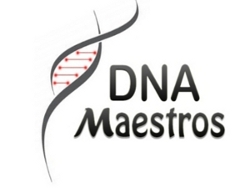Biomod/2012/IITG/DNA Maestros

Home Introduction The Project Materials & Methods Results and Discussion Conclusion Team Members Acknowledgements


Welcome to the OpenWetWare wiki of DNA Maestros!
Origins: It all began late last year, when Shaunak Kar, a student of Biotechnology at IIT Guwahati, first heard about BIOMOD. Gripped by an all-consuming urge to participate in this event, he assembled a team of a few friends to brainstorm and hit upon an idea. After a few barren months, the team finally thought of a project that they felt would be good enough to present at Harvard. They approached Dr. Yamuna Krishnan at the National Center for Biological Sciences, Bangalore, with this idea, and asked if she would be willing to mentor them. Yamuna was thrilled with the idea, and invited the team to her lab during the summer of 2012, to experimentally validate the idea- and thus the DNA Maestros were formed!
On this site, we have explained our work for BIOMOD 2012 in detail. Feel free to navigate our wiki, and we hope you like it.
Happy hunting!
DNA Maestros 27 October 2012
Project title:Small molecule triggered cargo release from a designer DNA polyhedron
Abstract
The unique properties of DNA such as its persistence length and specific associations enabled by Watson-Crick base pairing have helped it emerge as a powerful substrate for nanoconstruction. Three dimensional polyhedra based on DNA are emerging as strong candidates for display and delivery of small biomolecules in living systems. However, achieving controlled release of the encapsulated cargo with spatial and temporal control aided by molecular cues remains a challenge. Here, we show the controlled opening of a complex DNA polyhedron i.e the icosahedron, in response to an external trigger, namely cyclic-di-GMP (c-di-GMP). The icosahedron is engineered with aptamers for c-di-GMP which act as locks for the icosahedral cage. In the presence of c-di-GMP, these aptameric locks remodel due to formation of tertiary structure that results in the dissociation of the icosahedron into its two constituent halves due to strand displacement. This leads to release of encapsulated internal cargo, such as fluorescent Dextran. Using various fluorescence methods such as quenching and FRET, we elucidate tight control over the opening of the DNA icosahedron. This suggests that cargo-loaded polyhedra can be integrated with naturally occuring pathways and their specific secreted molecular cues that in turn provide spatial and/or temporal control over cargo release in diverse contexts.
Video
Our official video isn't yet up on this site. However, since we're approaching the deadline, that shouldn't take too long now. In the meanwhile, sit back, relax and enjoy, Gangnam Style!

